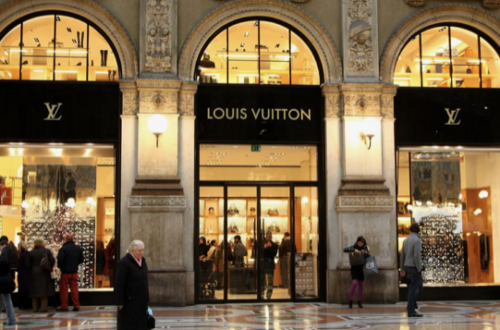It’s that time of the year again: we are less than two months away from Christmas, the time when people pour out into the streets of their cities, grouping in and out shopping centers, rushing around looking for the perfect gift, or simply having a relaxing walk enjoying the spirit and magic of Santa Claus’ season.

However, nothing will be the same this year because of the Covid-19 pandemic, which upended people’s habits. This includes the way they shop, as well as the amount they spend. Retailers hoped that September could help them recover the lost sales, however, especially for the fashion industry, this did not happen. According to the Osservatorio Confimprese Ey, in Italy there has been a downturn of fashion consumption of 12.9%, a strong sign of decline as compared to the -7% recorded in August, when both Coronavirus cases and government restrictions were almost absent. Moreover, October’s results in terms of sales volumes and revenues turned negative and the worsening of the healthcare situation is further complicating the industry recovery path. Christmas holidays may represent a turning point for the industry. However, retail predictions seem to be catastrophic: based on the Censis-Confimprese report, a decrease of $95 billion in fashion retail is expected, with the additional risk of losing over 700 thousand jobs. Italy is clearly not the only country struggling with the health crisis: the total holidays’ spending in the US is forecasted to halve during Christmas season, while a slump (between 15% and 25%) may hit on a global level.
People are not to blame: their desire of wandering around the shops is hindered by the fear related to safety concerns, especially when it comes to go shopping in stores that easily get crowded. On the other hand, e-commerce has recently gone through a phase of exponential growth in terms of both number orders and sales volumes. This change is emphasized by the fact that it involves both fast fashion and luxury brands. Indeed, Hermes has recently announced that its e-commerce has now become its “biggest shop”, considering that online revenues have overcome those of their physical stores and that sales in the digital platform had increased of almost 100% during the first three-quarters of the year. Similarly, the LVMH group declared that its e-commerce compensated for the losses caused by the prolonged shop closures during spring and summer. Also most renowned mass-market brands accelerated the shift, putting e-commerce at the center of their strategy and rethinking the ways of using their network of stores. Indeed, H&M claimed that its online sales intensified in 2020, reaching 26% of the total group income.
Taking the Covid 19-related anxiety and the online shopping increment into account, retailers of all-over the world anticipate much less customers in their physical stores and are trying to circumvent the situation with innovative activities. The first to reconsider Christmas strategies are the biggest American department store chains: Bloomingdale’s will host a virtual holiday fundraising event, with the participation of singers and dancers, while Saks Fifth Avenue will organize 20 lighting ceremonies to reveal their shopping windows step-by-step thus increasing customers’ curiosity.

Not only will retailers have to face physical demand loss, but also will have to face the challenge of managing delivery times to minimize delays during the holiday season. According to Guido Campello, co-CEO of lingerie brand Journelle, “A lot of retailers right now do not have stock or will be very tight on stock. Because of the supply chain disruptions and the surplus due to Covid, that is going to be an issue for a lot of brands”. Considering that people are used to same day or next-day delivery and to BOPIS – buy online pick-up in store – behavior, it raises the bar of costumers’ expectations to retailers. This is why many brands have encouraged people to buy sooner than later, shifting their holiday shopping season from December to October-November. In this situation, the biggest online shopping days, such as Cyber Monday, lend a hand with deals and bargains that incentivise a big portion of customers to complete their holiday shopping by the end of November.
Amazon, for its part, has been able to exploit the massive demand for online products and services. Indeed, in addition to the success of its Prime Day and of its anticipated Black Friday, which started on the 16th of October, the American company launched the initiative called “Holiday Dash”, where people can get huge discounts more than one month in advance on a wide variety of products, including, of course, fashion items from brands such as Calvin Klein, Tommy Hilfiger and Lacoste.
All in all, during such difficult and tough times, while a pandemic is challenging the economy and uncertainty is dominating every field of our social life, there is one thing that is still sure: December is coming, so be ready to bring out your inner Christmas mood!
by Mattia Segantin




